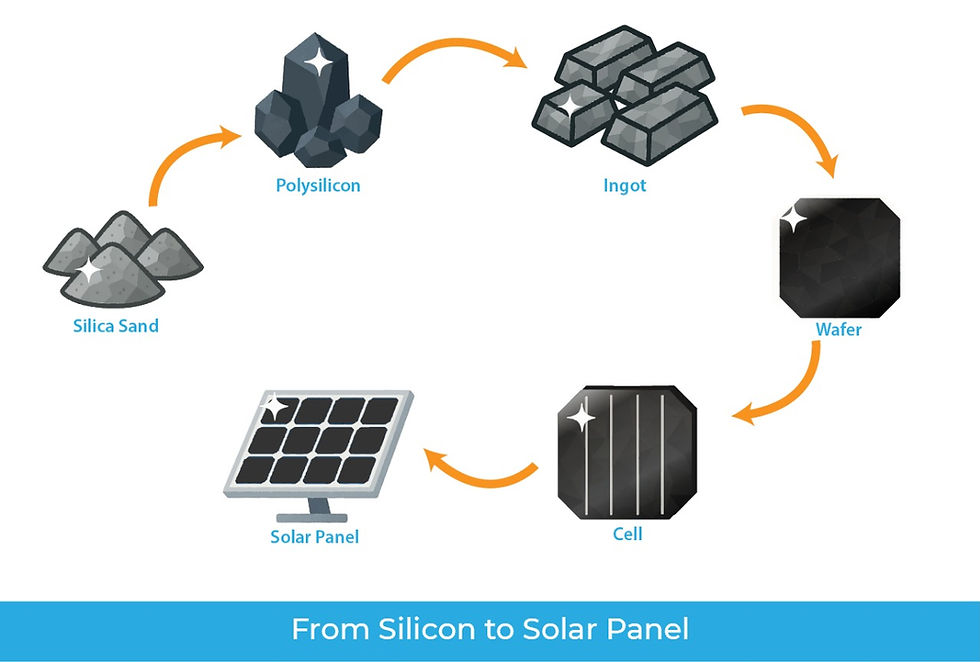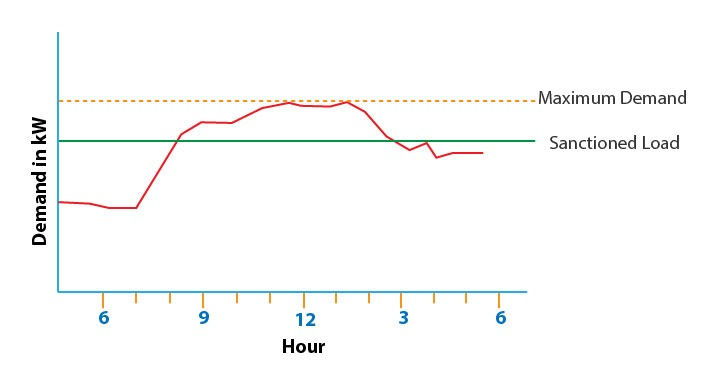Common Myths About Solar Energy (and the Truth Behind Them)
- Hyde Source

- Jul 25
- 4 min read
Solar energy has rapidly moved from a niche technology to a mainstream power solution. Despite its growing popularity and proven benefits, many misconceptions still circulate, often deterring potential adopters. These myths can stem from outdated information, a lack of understanding of modern solar technology, or simply word-of-mouth.
It's time to separate fact from fiction. Understanding the truth behind these common solar myths can help you make an informed decision about transitioning to clean, renewable energy.
Myth 1: Solar Panels Don't Work on Cloudy Days or at Night.

The Truth: This is one of the most pervasive myths. While solar panels produce the most electricity in direct sunlight, they do still work on cloudy days, albeit at a reduced capacity. They capture diffuse sunlight that penetrates cloud cover, meaning your system will still be generating power. At night, solar panels stop producing electricity. However, if you have a grid-tied system with net metering, any excess electricity generated during the day is sent back to the grid, earning you credits. You then draw from these credits or directly from the grid at night. For complete energy independence, solar batteries can store excess daytime energy for use after sunset or during power outages.
Myth 2: Solar Panels Are Too Expensive and Don't Offer a Good Return on Investment (ROI).
The Truth: The cost of solar has dramatically decreased over the past decade, making it more affordable than ever. While there's an upfront investment, solar panels offer a significant Return on Investment (ROI) and can lead to substantial long-term savings.
Decreasing Costs: Solar panel and installation costs have fallen sharply.
Incentives & Subsidies: Governments initiatives like "PM Surya Ghar: Muft Bijli Yojana" offers subsidies, and incentives that significantly reduce the net upfront cost.
Rapid Payback Periods: For many homeowners, the payback period (the time it takes for savings to equal the initial investment) can be as short as 3-7 years. After this, your electricity is virtually free for decades.
Myth 3: Solar Panels Require a Lot of Maintenance.
The Truth: Solar panels are remarkably durable and require minimal maintenance. They have no moving parts, so there's little to wear out.
Self-Cleaning: Rain often does a good job of washing away dust and dirt.
Occasional Cleaning: In very dusty or polluted areas, a simple rinse with a hose a few times a year might be beneficial. For stubborn grime, a soft brush and mild soap can be used.
Professional Checks: Annual inspections can ensure optimal performance and address any minor issues.
Long Warranties: Most panels come with performance warranties of 25 years or more, guaranteeing a certain output level.
Myth 4: Solar Panels Damage Your Roof.
The Truth: When installed by certified and experienced professionals, solar panels are designed to protect your roof, not damage it.
Waterproofing: Penetrations are carefully sealed and flashed to prevent leaks.
Roof Protection: Panels can actually protect your roof from harsh weather elements like UV rays, rain, and snow, potentially extending its lifespan in the covered areas.
Pre-Installation Assessment: A thorough site assessment includes checking your roof's condition and structural integrity to ensure it can safely support the system.
Myth 5: Solar Panels Are Inefficient and Don't Produce Enough Power.
The Truth: Modern solar panel technology has made significant strides in efficiency, and systems are custom-designed to meet your specific energy needs.
Rising Efficiency: Panel efficiency has steadily increased, with many residential panels now exceeding 22% efficiency. Technologies like Half-Cut Solar Panels further enhance performance by reducing resistive losses and improving shading tolerance.
Custom Sizing: Your solar system is sized based on your actual electricity consumption and available roof space, ensuring it generates enough power to offset a significant portion, or even all, of your electricity bill.
Real-World Performance: Factors like temperature, shading, and panel orientation are considered during design to maximize real-world energy harvest.
Myth 6: Going Solar Means Going Off-Grid.
The Truth: While it's possible to go completely off-grid with solar and battery storage, the vast majority of residential and commercial solar systems are grid-tied.
Grid-Tied Benefits: Being connected to the grid allows you to:
Sell Excess Power: Send surplus electricity back to the utility through net metering, earning credits.
Draw Power When Needed: Seamlessly draw power from the grid when your solar production is low (e.g., at night or on very cloudy days).
No Need for Large Batteries (unless desired): The grid acts as a virtual battery, eliminating the immediate need for expensive physical battery storage if your primary goal is bill reduction.
Myth 7: Solar Panels Are Bad for the Environment Because of Manufacturing and Disposal.
The Truth: While solar panel manufacturing does have an environmental footprint, the lifetime environmental benefits far outweigh the initial impact.
Net Positive Impact: Solar panels produce clean energy for decades, offsetting the emissions from their manufacturing in just a few years.
Recyclability: Solar panels are largely recyclable, with valuable materials like silicon, aluminum, and glass being recovered. The industry is continuously working towards more efficient recycling processes.
Reduced Emissions: By replacing fossil fuel-generated electricity, solar power significantly reduces greenhouse gas emissions and air pollution.
Conclusion
The solar industry has evolved rapidly, making solar energy a reliable, cost-effective, and environmentally friendly choice for homes and businesses. By debunking these common myths, we hope to provide you with a clearer, more accurate understanding of what solar energy can truly offer. It's an investment in your financial future and the planet's health, backed by proven technology and increasing accessibility.




